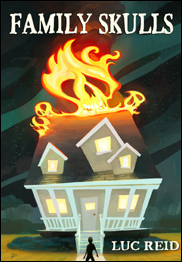Today’s guest post is from Kari Wolfe, whose blog Imperfect Clarity passes on everything she’s learning as she works toward building a writing career, interviews fascinating people, parents her daughter in ways she never expected, and forges her own habits of success.
Recently, Luc has been talking about broken ideas, his term for cognitive distortions. This topic falls under the general category of cognitive behavior therapy (CBT) which is based on the idea that if you change the way you think, you can change the way you feel.
Today’s guest post is from Kari Wolfe, whose blog Imperfect Clarity passes on everything she’s learning as she works toward building a writing career, interviews fascinating people, parents her daughter in ways she never expected, and forges her own habits of success.
For years, I complained of back and knee pain.
For years, I received the same advice from lots of well-meaning friends and family: go on a diet, lose weight, breast reduction surgery, walk more.
I ignored the advice. And my muscle pain became worse.
In April 2010, I started a 12-week-long session of physical therapy.
And everything began to change.
-00-
My assignment, should I choose to accept it…
My physical therapist gave me exercises to do, every night, six nights a week. And I did my exercises.
Begrudgingly.
I did my exercises, focusing on the point where they would not only be done. I stretched all the muscles that I needed to stretch, worked all the muscle groups I needed to work.
I’m still doing my exercises.
-00-
Well, while I’m working on this, I want to do this too…
Strangely enough, (I thought at the time, anyway) once I started focusing on my physical problems, I started paying more attention to my life.
I started focusing on an idea for a business. My writing, both fiction and non-fiction. I started looking for motivational material, books<; and blogs, to read, to get my spirits up and centered on what I wanted to do.
-00-
Is there a solution to depression?
The solution to depression isn’t always a pill. While medication can be helpful, it’s honestly not the “end-all, be-all” wonder cure for depression.
The downward spiral of depression can convince you there is nothing out there. If you take a walk, you’ll just end up walking back. If you exercise, you’ll look funny and people will laugh at you (my very own problem). If you try to solve the problem, you’re going to fail.
Or if you have back and neck problems, what you really need is a drug to numb the pain.
I’ve been there.
-00-
My solution, thus far.
The solution to depression can be as simple as getting up and going for a walk. Or starting an exercise routine. Or tackling a long-existing problem and working toward it’s solution. It’s not so much exactly what you do, but what you focus on.
Oddly enough, I think I like exercising when I wake up in the morning. Yep, first thing. Just don’t tell anyone. Please-I don’t want to ruin my reputation.
Once my heart begins to pump faster and my physical needs (shhhh…) are met, I’m ready to rest for a few minutes and then start to take on the day.
—
Kari Wolfe is a stay-at-home mother of a very curious three-year-old daughter who happens to be autistic. She is a writer and maintains her own blog, Imperfect Clarity where her focus is becoming the best writer (and person) she can be by living her life to the fullest 🙂



